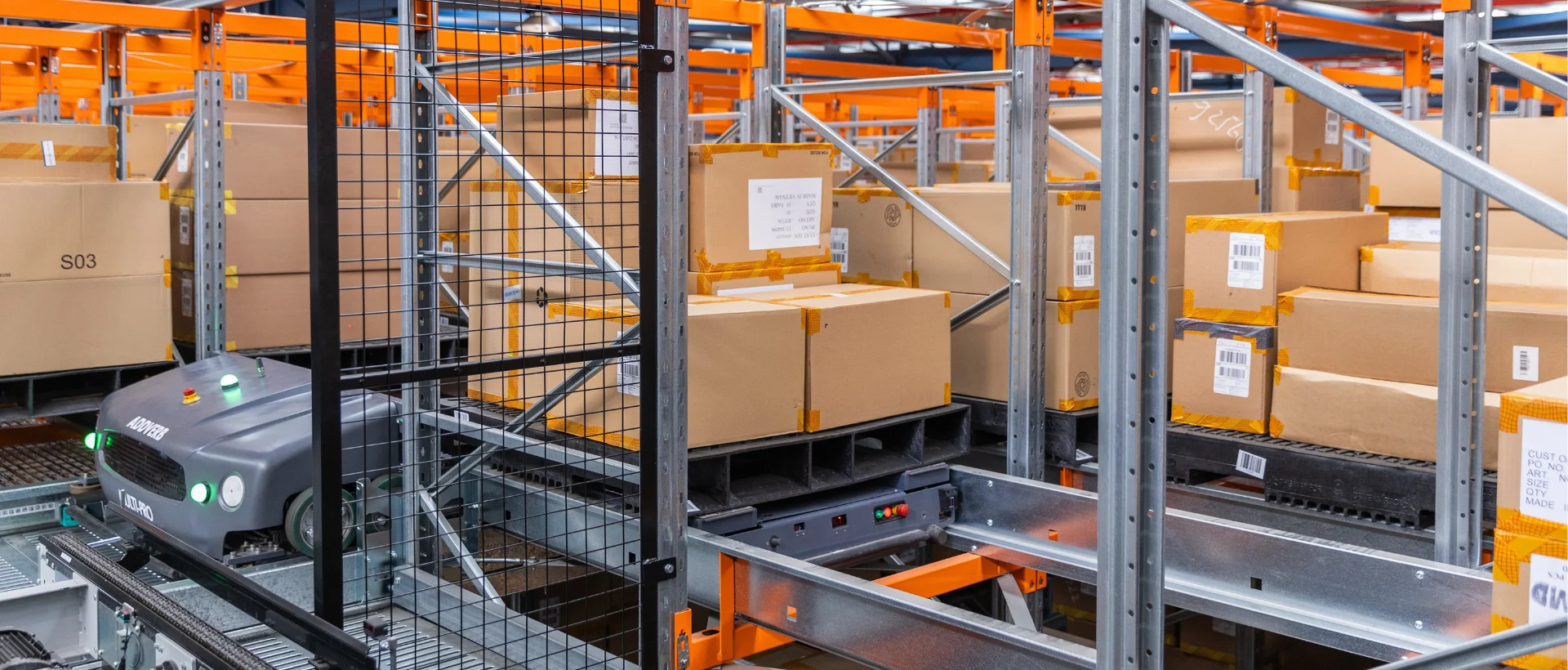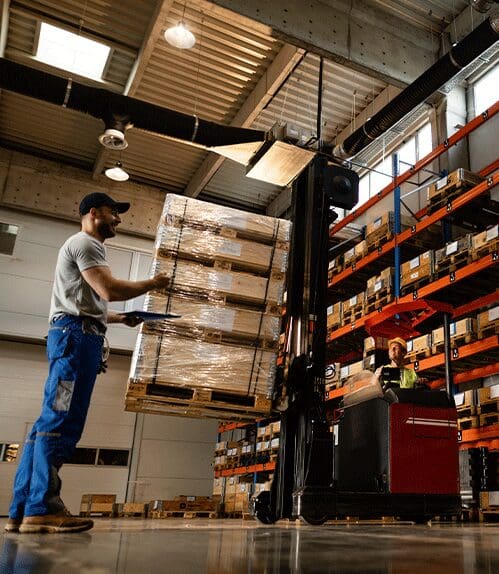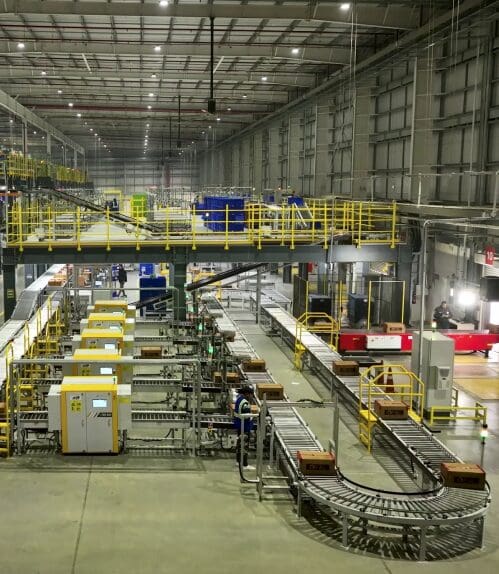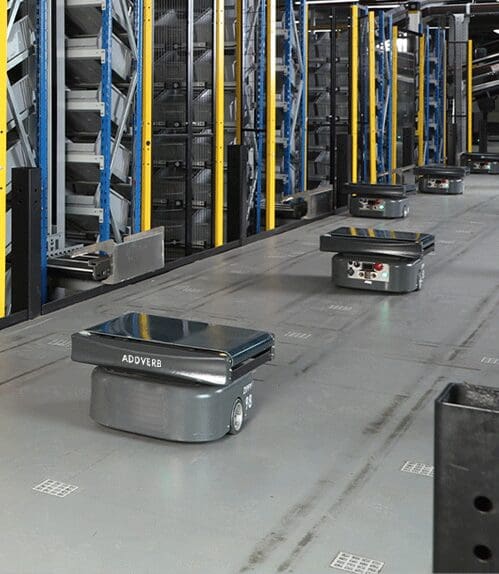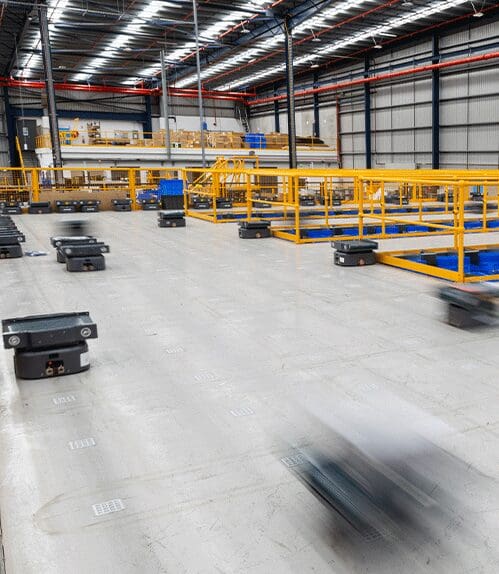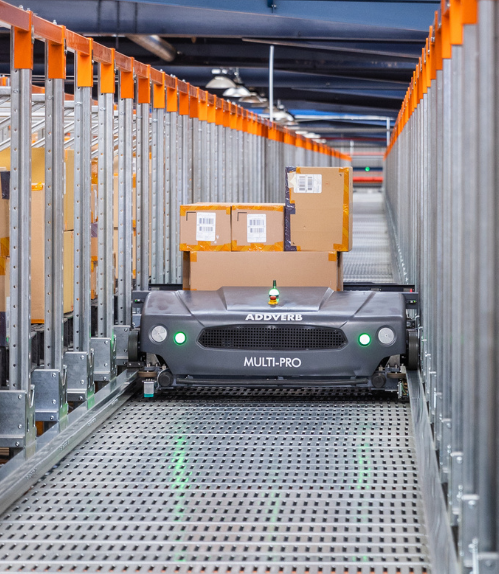Table of Contents
One thing that works as a common thread among the most successful companies today is their heavy investment in Robots in Warehouses. This investment is primarily done to tackle a challenge that’s been around for ages: Inefficiency.
This rapid growth highlights how quickly warehouse automation is advancing, driven by the increasing efficiency in warehousing operations that these robots offer. Operational efficiency in the warehousing industry refers to achieving maximum return while ensuring minimal wastage of time and resources.
From rising labor costs to the boom in e-commerce, there are plenty of reasons companies are going the automation way. McKinsey, in its reports, states that automation can bring down warehouse costs by as much as 30%.
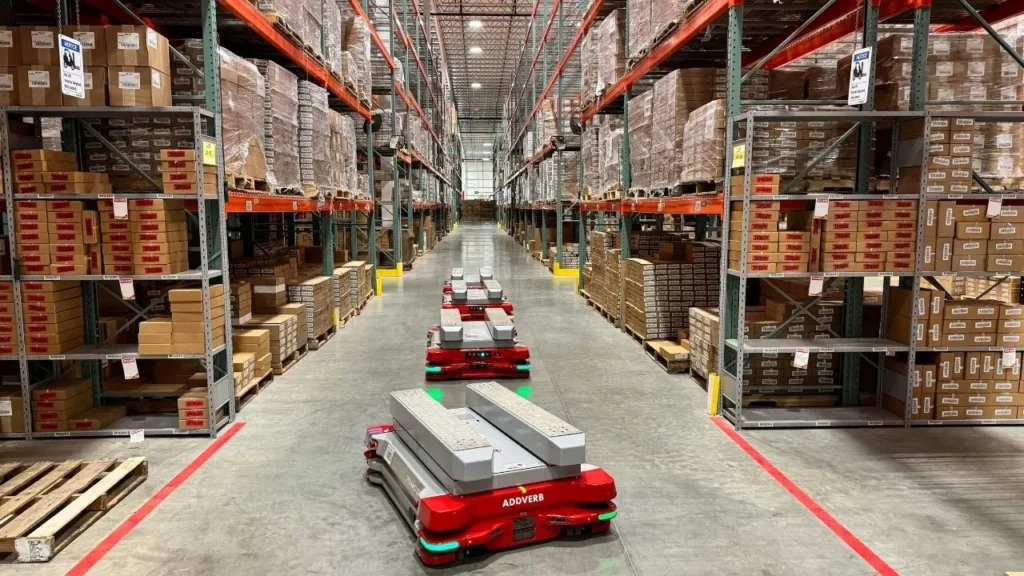
Types of Robots in Warehouses
Here is a list of the main Types of Robots You’ll find in Modern Warehouses:
Automated Storage and Retrieval Systems (AS/RS)
AS/RS systems are built to store and retrieve goods automatically without forklifts or manual climbing. Modern warehouses use advanced systems like crane setups, pallet shuttles, carton shuttles, mother-child shuttles, and 4-way pallet movers to retrieve items quickly, even from hard-to-reach, high-vertical spaces. These technologies speed up retrieval, reduce errors and product damage, and make better use of vertical storage to maximize warehouse capacity.
AGVs and AMRs (Mobile Robots)
Automated Guided Vehicles (AGVs) follow predetermined tracks, similar to warehouse trains. Autonomous Mobile Robots (AMRs), however, are a bit more advanced. They use sensors and maps to figure out the best way to navigate the floor. These robots dynamically plan their paths in real time to avoid obstacles, and make for an intelligent choice in environments where pick paths aren’t fixed or predefined.
Sorting Robots
Sorting robots are designed to promptly and accurately identify, classify, and organize different packages based on multiple criteria such as size, location, or delivery priority. Sorting robots have become a go-to solution for e-commerce hubs, where quick and accurate handling of orders is non-negotiable. They’re built to adjust to the constantly shifting demands of different operations. There are mainly two kinds in use—vertical sortation robots, which manage packages through vertical conveyors, and robotic sorters that rely on arms and vision systems for flexible sorting.
Person-to-Goods System
The introduction of pick-by-voice and pick-to-light has transformed the operations of teams in warehouses. Instead of staring at a screen or paper list, workers get instructions through a headset via a pick-by-voice system. Meanwhile, Pick-to-Light guides employees visually using illuminated indicators at essential storage locations, making picking faster by clearly pointing to where items are. Both these systems ensure less distraction, fewer mistakes, and faster onboarding for new staff.
Collaborative Robots (Cobots)
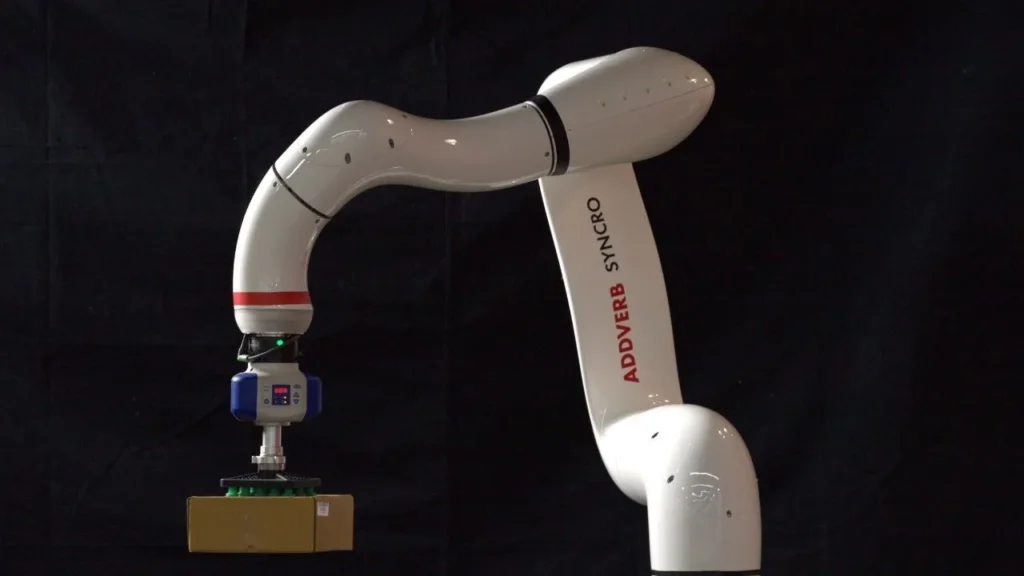
In contrast to many conventional industry robots that are programmed to operate in isolation, collaborative robots (cobots) are built to safely share workspace with human workers. They make everyday strenuous tasks, such as packing or assisting on the assembly line, smoother and safer. This feature makes them an ideal choice for environments where people and machines share the same space.
Core Functions of Robots in Warehouses
Check these functions to understand what these robots are actually doing every day.
Smart Material Movement
Robots in Warehouses accurately track the storage and movement of goods, reducing manual errors and ensuring that stock levels always stay updated. This minimizes risks like running out of stock or excessive holding.
Efficient Order Sorting & Fulfillment
Robots in Warehouses serves as a powerful ally in speeding up the entire order fulfillment process, from locating items in the warehouse to packing and dispatching them. They ensure fast and accurate sorting & picking, reduce manual labor, and save a lot of time throughout the delivery process.
Storage & Retrieval
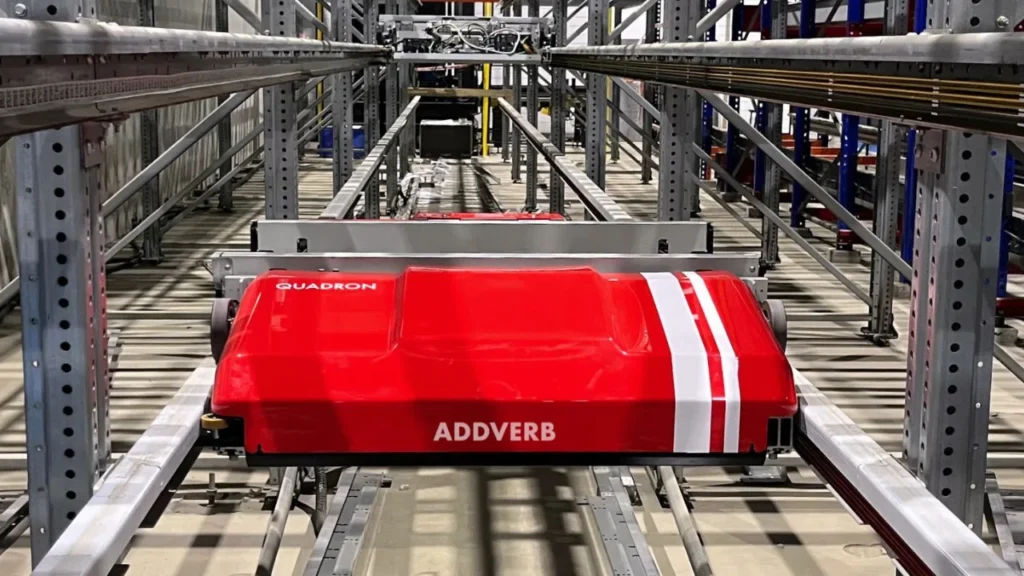
The robots in the warehouse efficiently store and retrieve goods from the warehouse, optimizing the vertical space and significantly reducing picking errors.
Enhanced Visibility
Robots come with inbuilt tracking capabilities that enhance visibility as to the whereabouts of every item and how it moves. These systems are advantageous for complex industries dealing with strict compliance regulations as they facilitate product auditing and control immediate removals from the market afterwards.
Thorough Quality Check
Smart sensors present in Robots in Warehouses swiftly monitor the quality of the product at each stage of processing. These intelligent features make identification of faulty items, wrong labelling, and other discrepancies much quicker, even before the products move to the packing stage. This detailed attention ensures maintenance of high standards and also helps increase throughput by preventing delays and rework.
Perks of Robots in Warehouses
These benefits are all the reasons why businesses are all in on Robots in Warehouses.
No Breaks or Downtime
Robots in Warehouses work nonstop.. This smooth flow of work improves the speed of processing orders, which really pays off during busy periods like Black Friday or holiday sales.
Maximizes Workplace Safety
Robots in Warehouses reduce workplace injury risks when they perform labor-intensive jobs involving heavy lifting or working in extreme temperatures. Implementing these measures leads to improved workplace safety while simplifying compliance with safety and health standards.
Enhanced Accuracy
Robots are adept at performing repetitive tasks with precision. Warehouse automation has minimized human errors in various activities, ranging from picking and sorting to labeling and packing. This reduction in errors leads to fewer returns, better customer satisfaction, and reduced losses.
Strategic Use of Resources
Robots can slip through narrow aisles and access tall storage racks with ease, something that’s tough for human workers to do safely and efficiently. This means warehouses can make the most of every square foot, fitting more stock without sacrificing speed or safety.
Flexible and Versatile
Robots in Warehouses are quick to adapt to change, reprogrammed, and scaled to meet the ever-changing needs of the evolving business landscape. This flexibility makes them a smart long-term investment decision for companies that are looking to stay in business without having to deal with the hassle of continuously upgrading their infrastructure.
Success Story: ITC and Addverb
Real-world examples and results can provide a much better picture of the Robots in Warehouses impact in the industry. ITC partnered with Addverb to upgrade its high-density storage plant using Mother-Child shuttle systems. The setup now spans G+4 levels with 3,440 pallet positions, supported by 11 mother shuttles and 10 child shuttles. Automation provided results and pushed the inbound throughput to 135 pallets/hour and the outbound throughput to 160 pallets/hour. ITC eliminated the need for middleware and significantly simplified its maintenance by integrating SAP EWM, WMS, and PLCs
These KPIs reflect how robotics and smart automation can efficiently deliver operational efficiency, especially in large-scale warehouses.
Conclusion
In conclusion, it won’t be wrong to say that Robots in Warehouses have redefined the industry, standing out as one of the best tech marvels of our time. According to a forecast by Fortune Business Insights, the global warehouse robotics market was valued at USD 5.82 billion in 2024 and is projected to reach USD 17.98 billion by 2032, growing at a compound annual growth rate (CAGR) of 15.6%. From sorting robots and cobots to mobile robots, these automated systems have taken efficiency to impressive new heights. As technology evolves, businesses will have to adopt robotics in their operations to stay agile, competitive, and ahead in this ever-changing environment.
Companies like Addverb, with their versatile and intelligent robotic solutions, are leading this change. Boost your business’s productivity and step confidently into the future of automation by partnering with Addverb today.

